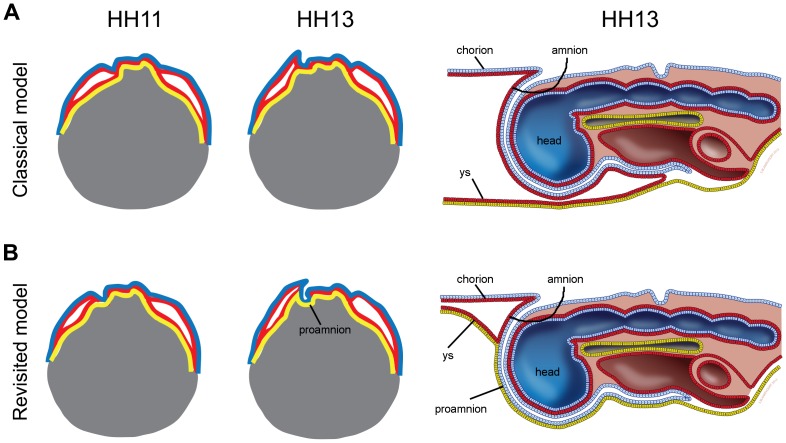User:Z5020373: Difference between revisions
| Line 81: | Line 81: | ||
<quiz display=shuffle> | <quiz display=shuffle> | ||
{ | {The first organ to form after the development of the heart is the: | ||
|type="()"} | |type="()"} | ||
+ Liver | + Liver | ||
Revision as of 10:06, 31 August 2016
| Student Information (expand to read) | ||||||||||||||||||||||||||||||||||||||||||||||||||||||||||||||||
|---|---|---|---|---|---|---|---|---|---|---|---|---|---|---|---|---|---|---|---|---|---|---|---|---|---|---|---|---|---|---|---|---|---|---|---|---|---|---|---|---|---|---|---|---|---|---|---|---|---|---|---|---|---|---|---|---|---|---|---|---|---|---|---|---|
| Individual Assessments | ||||||||||||||||||||||||||||||||||||||||||||||||||||||||||||||||
|
Please leave this template on top of your student page as I will add your assessment items here. Beginning your online work - Working Online in this course
Click here to email Dr Mark Hill | ||||||||||||||||||||||||||||||||||||||||||||||||||||||||||||||||
| Lab 1 Assessment - Researching a Topic | ||||||||||||||||||||||||||||||||||||||||||||||||||||||||||||||||
In the lab I showed you how to find the PubMed reference database and search it using a topic word. Lab 1 assessment will be for you to use this to find a research reference on "fertilization" and write a brief summary of the main finding of the paper.
| ||||||||||||||||||||||||||||||||||||||||||||||||||||||||||||||||
| Lab 2 Assessment - Uploading an Image | ||||||||||||||||||||||||||||||||||||||||||||||||||||||||||||||||
OK you are now in a group
Initially the topic can be as specific or as broad as you want. Chicken embryo E-cad and P-cad gastrulation[1] References
| ||||||||||||||||||||||||||||||||||||||||||||||||||||||||||||||||
| Lab 4 Assessment - GIT Quiz | ||||||||||||||||||||||||||||||||||||||||||||||||||||||||||||||||
|
ANAT2341 Quiz Example | Category:Quiz | ANAT2341 Student 2015 Quiz Questions | Design 4 quiz questions based upon gastrointestinal tract. Add the quiz to your own page under Lab 4 assessment and provide a sub-sub-heading on the topic of the quiz. An example is shown below (open this page in view code or edit mode). Note that it is not just how you ask the question, but also how you explain the correct answer. | ||||||||||||||||||||||||||||||||||||||||||||||||||||||||||||||||
| Lab 5 Assessment - Course Review | ||||||||||||||||||||||||||||||||||||||||||||||||||||||||||||||||
| Complete the course review questionnaire and add the fact you have completed to your student page. | ||||||||||||||||||||||||||||||||||||||||||||||||||||||||||||||||
| Lab 6 Assessment - Cleft Lip and Palate | ||||||||||||||||||||||||||||||||||||||||||||||||||||||||||||||||
| ||||||||||||||||||||||||||||||||||||||||||||||||||||||||||||||||
| Lab 7 Assessment - Muscular Dystrophy | ||||||||||||||||||||||||||||||||||||||||||||||||||||||||||||||||
| ||||||||||||||||||||||||||||||||||||||||||||||||||||||||||||||||
| Lab 8 Assessment - Quiz | ||||||||||||||||||||||||||||||||||||||||||||||||||||||||||||||||
| A brief quiz was held in the practical class on urogenital development. | ||||||||||||||||||||||||||||||||||||||||||||||||||||||||||||||||
| Lab 9 Assessment - Peer Assessment | ||||||||||||||||||||||||||||||||||||||||||||||||||||||||||||||||
| ||||||||||||||||||||||||||||||||||||||||||||||||||||||||||||||||
| Lab 10 Assessment - Stem Cells | ||||||||||||||||||||||||||||||||||||||||||||||||||||||||||||||||
As part of the assessment for this course, you will give a 15 minutes journal club presentation in Lab 10. For this you will in your current student group discuss a recent (published after 2011) original research article (not a review!) on stem cell biology or technology.
| ||||||||||||||||||||||||||||||||||||||||||||||||||||||||||||||||
| Lab 11 Assessment - Heart Development | ||||||||||||||||||||||||||||||||||||||||||||||||||||||||||||||||
| Read the following recent review article on heart repair and from the reference list identify a cited research article and write a brief summary of the paper's main findings. Then describe how the original research result was used in the review article.
<pubmed>26932668</pubmed>Development | ||||||||||||||||||||||||||||||||||||||||||||||||||||||||||||||||
| ||||||||||||||||||||||||||||||||||||||||||||||||||||||||||||||||
Team role: Resource investigator
After reading about the various team roles, I have concluded that I am probably the Resource Investigator in any team situation. I am usually very enthusiastic about new projects, and I like to search about the internet for articles or research papers. By the end of it I find myself hoarding all these articles into a folder. I do like to build on ideas rather than create them which is something I identified with in the description. I always have a positive attitude and I like connecting people because it makes me happy to see everyone working together.
Fertilisation
The most interesting thing I found about this lecture would probably be learning about the polar bodies. Up until this lecture I never really gave it much thought as to where the extra DNA from meiosis goes, so finding about the existence of not 2, but 3 polar bodies was really interesting. I also thought that the Zona Pellucida protein (ZP2) is a very fascinating but smart mechanism to make human spermatozoa species specific.
| Mark Hill 4 August 2016 - Thank you for adding this content before the lab. I would suggest that rather than using a template that you simply paste on this current page with separate subheadings for each lab/assessment item. Also please no names, just your student number. |
Lab 1
Lab Attendance
Z5020373 (talk) 14:36, 5 August 2016 (AEST)
Lab Demonstrations
External Link
Internal Link
https://embryology.med.unsw.edu.au/embryology/index.php/2011_Lab_1
Referencing
PMID 27486280
Lab 1 Assessment
<pubmed>27123200</pubmed>
This research article explores whether choosing to a conduct embryo transfer (ET) on a weekend or weekday will affect the success of clinical pregnancy in IVF procedures. In the study, ET transfers were performed on either weekdays or weekends in patients with similar clinical characteristics, such as age, body-mass index and duration of infertility. Clinical pregnancy was determined using blood pregnancy tests and ultrasound examination and was defined as the “presence of a gestational sac with a foetal heart beat.” After the ETs, the authors found that there was an overall 42.8% success rate of clinical pregnancy in patients from both groups, with a 14.6% increase in the pregnancy rate when weekend ETs where compared to weekday ETs. The study however, did not examine any possible reasons to explain this increase in implantation rate although a few potential factors were discussed from previous findings in this area of research. These included endometrial receptivity which occurs 5 days after the post-ovulatory progesterone surge. The article mentioned that uterine receptivity and implantation could be affected by the junctional zone. The extent of junctional zone contractility differs throughout the ovarian cycle and an increased contractility just before ET has been previously shown to significantly decrease the likelihood of successful implantation. Since weekends are more relaxing than weekdays they suggest a possible correlation between that and reduced junctional zone contractions leading to easier ETs. Therefore from this study, it was concluded that ETs performed during the weekends are more successful than those performed during the weekdays identifying a potential factor that can improve ETs in IVF situations.
| Mark Hill (talk) 14:24, 15 August 2016 (AEST) - This is a good summary of a paper that looks at potential environmental/endocrine effects on reproductive fertility. You needed to put the reference at the top rather than just the PMID number, fix this and you can get this full mark for the exercise.
Mark Hill 18 August 2016 - You did not fix, so I have adjusted the final mark. |
Assessment 4/5 |
Lab 2
Lab Attendance
Z5020373 (talk) 14:41, 12 August 2016 (AEST)
Lab 2 Assessment
Chicken embryo amion fold development[1]
| Mark Hill (talk) 14:24, 15 August 2016 (AEST) - Very good, the image relates to early development and contains the reference, copyright and student template. (5/5) |
Lab 3
Lab Attendance
Z5020373 (talk) 13:53, 19 August 2016 (AEST)
Lab 4
Lab Attendance
Z5020373 (talk) 13:02, 26 August 2016 (AEST)
Lab 4 Assessment
Take the Quiz
Make your selection for all questions before clicking submit.
<quiz display=shuffle>
{The first organ to form after the development of the heart is the: |type="()"} + Liver - Stomach - Pancreas - Gall Bladder.
||The liver is the first organ to form following the development of the heart. The stomach, pancreas and gall bladder all develop soon after.
{How many rotations does the stomach undergo during GIT development in week 4 to 5?
|type="()"}
- 1
+ 2
- 3
- 4
|| The stomach undergoes two embryonic 90 degree rotations: the first to establish the J-shape that forms the adult stomach body (classic curvature), and the second rotation establishes it in its correct anatomical position.
{Following the degeneration of the buccopharyngeal membrane, the foregut is open to which cavity?
|type="()"}
- The peritoneal cavity
- The chorionic cavity
- The yolk sac
+ The amniotic cavity
|| During week 4 of development, the breakdown of the buccopharangeal membrane exposes the foregut to the amniotic cavity where amniotic fluid is then able to fill the foregut.
{Which one of these is not an abnormality that can occur during the proliferation and re-canalisation of the gut tube?
|type="()"}
- Occlusion
+ Meckel's diverticulum
- Duplication
- Stenosis
||During re-canalisation, if the gut tube does not re-canalise the tube can remain completely occluded. Another senario would be if there is renalisation but it occurs in discrete channels to give rise to duplicated gut tubes. The third abnormality occurs when there is incomplete vasculisation which leads to stenosis or narrowing of the tube. The only abnormality that is not involved in Meckel's diverticulum and is associated with failure of Vitelline duct breakdown leaving a yolk stalk remnant. It is a common abnormality with a prevalence of 1-2% and can lead to infection and possibly affect the rotation of the midgut.
{During week 4 in GIT development:
|type="()"}
- The cloacal membrane is broken down while the buccopharyngeal membrane remains intact
+ The buccopharyngeal membrane is broken down while the cloacal membrane remains intact
- Both the buccopharyngeal and cloacal membranes break down simultaneously
- Both the buccopharyngeal and cloacal membranes remain intact.
||Loss of the buccopharangeal membrane during week 4 allows amniotic fluid into the foregut. The cloacal membrane remains intact and does not break down until the cloaca is divided into urogenital sinuses and the rectum (occurs later in embryonic development.
References
- ↑ <pubmed>24647352</pubmed>



